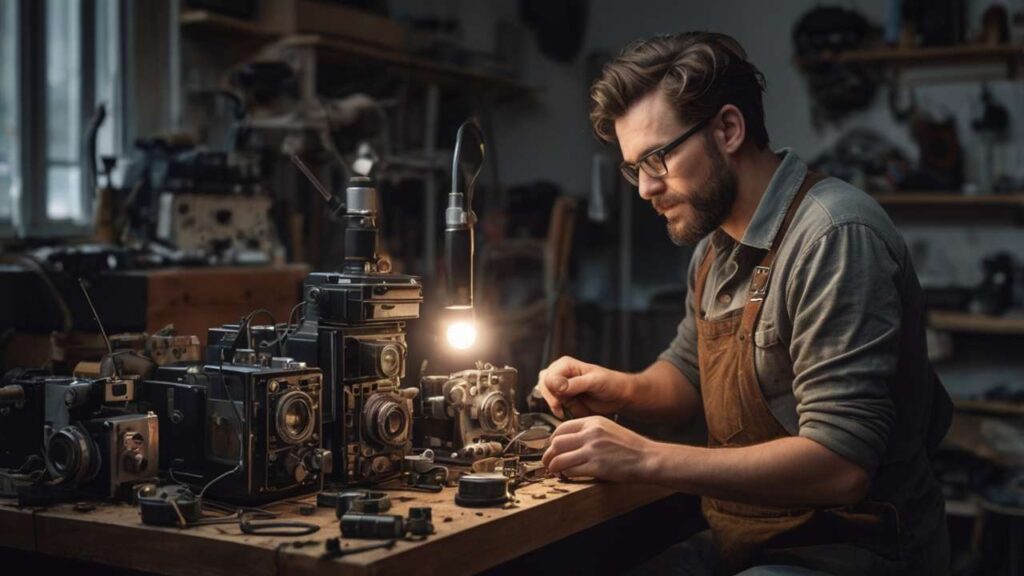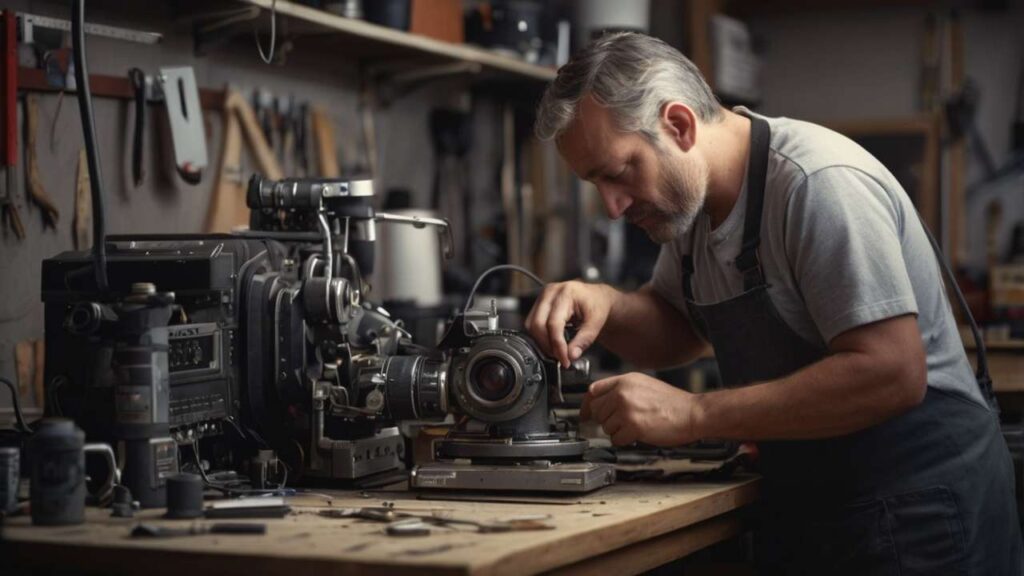It’s funny, but many photographers (myself included once upon a time) tend to believe that sending a camera for repair is like leaving it at some mysterious black box. You drop it off, wait a few weeks, and hope it comes back alive. That sense of uncertainty is nerve-wracking, especially when you’re talking about equipment that might have cost you a few thousand dollars. But the reality is, the camera repair process isn’t magic. It’s a carefully structured series of steps handled by trusted professionals using specialized tools, a ton of patience, and genuine expertise.
In fact, the process itself is designed not only to solve the problem but also to protect the camera’s performance and longevity for years to come. By understanding what happens behind the lens—yes, literally—you can feel more confident about leaving your gear in the hands of a reliable expert. And honestly, once you know how much precision goes into every step, you may start appreciating camera technicians as artists in their own right.
The Diagnostic Phase: More Than Meets the Eye
Every repair starts with a diagnosis. Sounds simple, right? But diagnosing a camera issue is much more than just opening the back and glancing inside. A professional technician uses software designed to interact with the camera’s circuits, firmware, and sensors. For instance, there’s a diagnostic program Nikon service centers rely on that communicates directly with the shutter count, sensor health, and autofocus calibration.
I once watched a trusted repair expert in North Carolina hook up a Canon EOS R to a calibration rig that looked like a mini-laboratory. It wasn’t about guesswork. He used oscilloscopes to check for electrical irregularities, magnifiers to inspect for corrosion on circuit boards, and even infrared tools to detect subtle heat signatures. It’s at this stage that problems like a failing shutter motor or a burnt capacitor (a common culprit—just like in laptops) are identified.
It’s worth pointing out that a good repair shop doesn’t rush this phase. They know that a misdiagnosis can lead to more damage later. That’s why choosing a professional, expert, and reliable service matters. You don’t want your camera treated like a trial-and-error project.
If you’re curious about other common camera issues technicians see every day, this guide—Understanding Common Camera Malfunctions—is a goldmine of information. It can help you recognize early warning signs before they escalate into costly breakdowns.
The Importance of Genuine Parts
Let’s be blunt: cheap parts will ruin your camera. This isn’t like swapping a universal phone charger. Cameras are delicate ecosystems where one weak component can throw everything out of balance. That’s why reputable technicians insist on using OEM (Original Equipment Manufacturer) parts.
Here’s a quick story: a friend of mine tried to save a few bucks by letting an unofficial repair shop replace his Sony mirrorless shutter assembly with a third-party component. At first, it seemed fine. But within three months, the camera started showing error codes, and autofocus became inconsistent. He ended up paying double because a professional had to redo everything with genuine parts.
Genuine parts aren’t just about brand loyalty. They’re engineered to match tolerances, voltages, and firmware compatibility precisely. Without them, you compromise image quality and even risk permanent damage. The best services—like Top-Quality Camera Repair in North Carolina—will always be transparent about the parts they use. If a shop hesitates to clarify that, take it as a red flag.
Calibration and Testing: Precision Before Perfection
Fixing the issue is only half the battle. The final steps—calibration and testing—are where the magic happens. Imagine your camera as a finely tuned instrument, like a grand piano. Even after replacing a broken string, you’d still need to retune it to perfection. The same logic applies here.
Technicians run test shots under controlled lighting conditions, using specialized calibration charts to check autofocus accuracy, color balance, and sensor performance. Some shops have robotic rigs that simulate real-world shooting scenarios. Others keep it simple but effective: a set of test lenses, a tripod, and a carefully lit studio corner.
I once witnessed a repair technician take nearly 50 test shots with a freshly repaired Nikon D850, meticulously comparing sharpness across the frame and tweaking micro-adjustments in the firmware until every shot lined up flawlessly. That patience—borderline obsession, honestly—is why professional repairs stand apart from quick DIY attempts.
Calibration ensures you don’t just get a camera that “works” but one that feels like it did when it first came out of the box.
The Human Element: Craft, Patience, and Trust
Behind every successful repair is a human being who has dedicated years to mastering the craft. Some technicians describe their work as therapeutic—like solving a complex puzzle. There’s a rhythm to it: diagnose, disassemble, replace, calibrate, reassemble, test, and finally, polish.
One trusted technician I interviewed said, “Patience is the real tool we use. Cameras are fragile, and rushing even a single step can destroy hours of work. That’s why I treat every repair like it’s my own gear.”
That statement stuck with me because it highlighted something important: this isn’t just a mechanical fix. It’s a relationship of trust between you and the person handling your expensive equipment. By seeing technicians not just as mechanics but as skilled artisans, you can appreciate why it’s worth finding a reliable camera repair service instead of gambling with the cheapest option.
Beyond the Fix: Preventive Care
Sending a camera for repair doesn’t have to be the only time it gets professional attention. Just like cars need oil changes, cameras benefit from regular maintenance. Dust removal, firmware updates, and lubrication of moving parts can extend the lifespan dramatically.
Many photographers underestimate how much dirt accumulates on sensors or how fast shutter components wear out in humid climates. By scheduling preventive check-ups, you not only reduce the risk of breakdowns but also save money long term. And frankly, nothing feels better than picking up a camera that’s been freshly cleaned and tuned—it almost inspires you to shoot more.
Understanding Common Malfunctions and How Experts Handle Them
If your camera randomly shuts down, shows error messages, or produces blurry images despite a clean lens, don’t panic. These are everyday issues technicians see. Sometimes it’s a loose ribbon cable, other times it’s a failing capacitor or worn-out shutter. Knowing this should give you peace of mind: you’re not alone, and these problems are fixable.
You can dive deeper into these issues through articles like Finding the Right Fit: What to Look for in a Camera Repair Service in North Carolina which explains how to choose a service that won’t let you down.
Case Study: A Wedding Photographer’s Lifeline
Here’s a real-life story that captures the value of professional camera repair. A wedding photographer in Raleigh once shared how his Canon 5D Mark IV died during a rehearsal shoot. Panic doesn’t even begin to describe it. Luckily, he rushed it to a trusted local repair service that diagnosed a burnt capacitor in the power board. Within 72 hours, the part was replaced, the camera recalibrated, and it was back in action just in time for the big day.
The photographer later admitted, “That repair saved my career. Without it, I’d have lost a client and my reputation.” Stories like these highlight why choosing the best and most reliable repair service matters more than chasing the cheapest fix.
Future Directions: Expanding the Conversation
While this post focuses on the repair process, there’s so much more to explore. Photographers also benefit from content about upgrading gear responsibly, DIY cleaning tips that won’t void warranties, or guides comparing insurance versus repair costs. Even stories about the evolution of camera technology—from film to mirrorless—can enrich the conversation and help readers make smarter choices about protecting their equipment.
By weaving these future topics naturally into today’s discussion, the overall knowledge base becomes not just about “fixing what’s broken” but about building a lifestyle of care, trust, and informed decisions around photography gear.
For a central hub of resources, Pro Service Tips keeps expanding with guides, tips, and practical insights every photographer should bookmark.
FAQs
1. How long does the camera repair process usually take?
It depends on the problem. Simple fixes like sensor cleaning may take a few days, while complex board replacements can take weeks. Trusted services often provide an estimate upfront.
2. Is it worth repairing an old camera?
Yes, if the model still suits your needs. Repairs are usually cheaper than buying new, especially when genuine parts and expert calibration restore the camera close to factory standards.
3. Can I attempt camera repair myself?
Unless it’s basic cleaning, it’s risky. Cameras contain fragile sensors and precise electronics. DIY attempts often make the damage worse. It’s always safer to trust a professional service.
Final Thoughts
The camera repair process may seem intimidating, but once you understand the diagnostic precision, the reliance on genuine parts, the meticulous calibration, and the human expertise behind it, the mystery fades away. What remains is a clear picture: professional repair is less about “fixing a gadget” and more about restoring a trusted companion in your creative journey.
So the next time your camera falters, don’t panic—and definitely don’t settle for a guesswork fix. Look for a service that values your gear as much as you do. And if this article gave you a bit more confidence, don’t forget to hit the share buttons below. Someone in your photography circle might be silently stressing over a broken camera right now.


